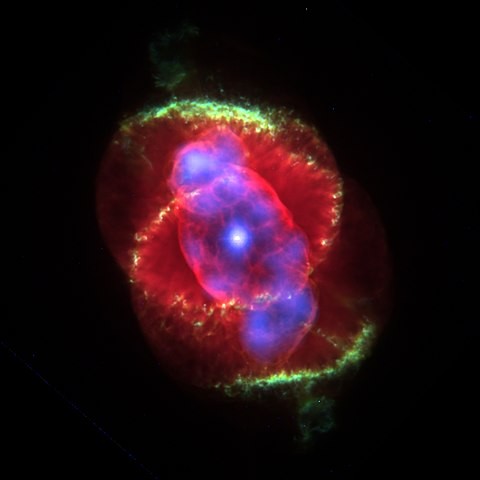
(Photo: Wikimedia Commons/HST's Greatest Hits)
Astronomers spotted a beautiful nebula, and they found it cool. However, they found more interesting features when they looked closer at its data.
Nebula HD 14893
In the study "A magnetic massive star has experienced a stellar merger," astronomers were surprised when they observed a star pair at the center of a breathtaking nebula—a giant cloud of gas and dust. Like twins, star couples usually have a lot in common, but in HD 148937, one star appears to be younger and magnetic, in contrast to the other.
According to recent data from the European Southern Observatory (ESO), the system may have contained three stars before merging the two stars. This violent catastrophe formed the surrounding cloud, which also permanently changed the system's destiny.
Abigail Frost, the study's main author and an astronomer at ESO in Chile, was struck by how special the system was when she read its background.
HD 148937 system is situated in the direction of the Norma constellation, about 3800 light-years from Earth. It consists of two far more massive stars than the Sun, encircled by a stunning nebula.
Since a nebula encircling two massive stars is uncommon, they were left with the strong impression that something interesting had to have occurred in the system. Frost admitted that the coolness only grew when they examined the data.
A thorough examination allowed them to conclude that the more massive star looked significantly younger than its companion despite their supposed simultaneous formation.
Given that the two stars appear to be at least 1.5 million years apart in age, something likely revived the more massive star.
The NGC 6164/6165 nebula surrounding the stars is another puzzle piece. It is hundreds of times younger than both stars and is only 7500 years old.
Carbon, oxygen, and nitrogen concentrations are also visible in the nebula. This is unexpected because one would generally expect these elements to be found deep within stars rather than outside. It's as if a violent event had released them.
ALSO READ: Is Betelgeuse Going Supernova? Red Supergiant Star Continues To Show Unexpected Behavior
Findings Answer How Stars Develop Magnetic Fields
According to Hugues Sana, a professor at KU Leuven in Belgium and the main investigator of the observations, they believed the system originally had at least three stars. Two had to be close together at one point in the orbit while the other was more distant.
The nebula was formed when the two inner stars violently fused, releasing material and producing a magnetic star. The newly combined, now-magnetic star and the more distant star created the binary visible in the nebula's center today by forming a new orbit around each other.
Co-author Laurent Mahy, a senior researcher at the Royal Observatory of Belgium, added that finding an age gap between the stars showed that this scenario was the most feasible, and it was only possible to show it with the new ESO data.
This hypothesis also explains another oddity of HD 148937 observed in the VLTI data -- why one of the stars in the system is magnetic, and the other is not.
It simultaneously contributes to resolving a longstanding mystery in astronomy: the source of large stars' magnetic fields. Even while low-mass stars like our Sun have magnetic fields, more massive stars are unable to maintain them in the same manner. However, some large stars do have magnetic properties.
RELATED ARTICLE: Will The Sun Explode 5 Billion Years From Now? Probably, Experts Say!
Check out more news and information on Space in Science Times.














